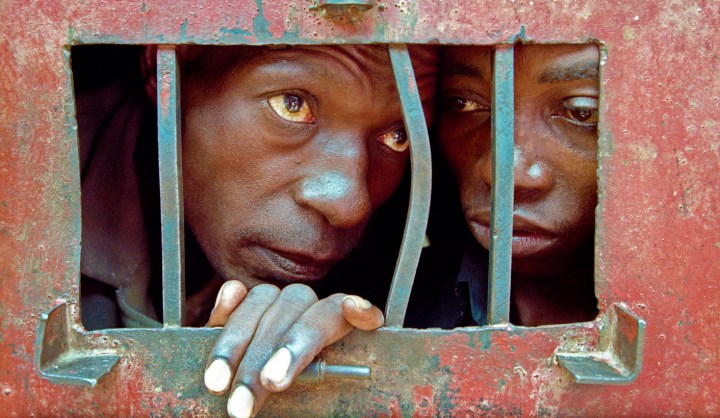Africa
In photos: The prison of the Rwandan Génocidaires

Kigali Prison, Rwanda, 1995, was a colonial building that looked scary from the outside, but it was when GREG MARINOVICH went inside that it became truly terrifying.
The prison in Kigali was, in some ways, much like any other overcrowded, sordid, smelly and downright scary jail in Africa. But unlike others, filled with petty criminals, debtors, murderers and thieves, this one was filled – overfilled – with just a small cross-section of those accused of participating in the genocide of almost a million Tutsis, along with some Hutu moderates.
Many among the prisoners were young boys. Boys with a look of either sorrow or contempt. And those mothers? With their infants in jail with them? What had they done? Who am I to judge people I do not know? – But my imagination had been fuelled by having seen mass graves, spoken to survivors, having met victims of repeated gang rape. It was difficult not to have an opinion.
Yet surely the worst of the perpetrators had fled to what was then Zaïre, ahead of the conquering Rwandan Patriotic Front (RPF)? Who were these people – men, women and children – who had decided to stay in the villages and towns where they had taken part in the genocide?
Were they so sure of the extermination of their enemies that they thought they were safe from retribution?
The RPF did not try to run the prison; they left that to the Hutu leadership inside the prison. The authorities writ ran out at the entrance. Going into it was to hand yourself over to genocidal maniacs. It was much like stepping off a bridge and hoping you would survive.
On the inside, young boys were incarcerated alongside adults, all crammed into unimaginably small spaces. The smell assaulted you, as did the sense of menace. Those awaiting trial wore pale pink uniforms. The idea was to try each and every one of these alleged killers, but the justice system could not manage such numbers. Even if they tried 1,000 people a year, it would take 120 years to process all 120,000 accused of genocide.
As conditions worsened in this and other prisons, the Rwandan government turned to the Gacaca court system – a traditional community-based way to find justice, and perhaps reconciliation.
Those who had confessed were among the first to be released back into the community and await their turn at the Gacaca courts. The Gacaca system wound down in 2012, after trying almost two million people, and convicting 65% of them. Of course, this was imperfect justice in many cases, but how else to deal with the numbers of those who took part in the killing of almost a million people, in every village and town? DM
All photos by GREG MARINOVICH, taken in Kigali Prison, May 11, 1995.







Read more:
- Twenty years on, questions of Rwandan justice persist in VOA News
- The Gacaca Courts, Post-Genocide Justice and Reconciliation in Rwanda, by Phil Clark
- My lesson from Rwandan Genocide: evil is not a political problem in Spectator.

















 Become an Insider
Become an Insider